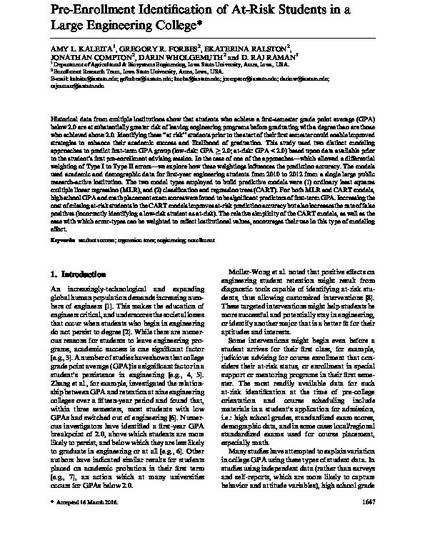
Historical data from multiple institutions show that students who achieve a first-semester grade point average (GPA) below 2.0 are at substantially greater risk of leaving engineering programs before graduating with a degree than are those who achieved above 2.0. Identifying these ‘‘at risk’’ students prior to the start of their first semester could enable improved strategies to enhance their academic success and likelihood of graduation. This study used two distinct modeling approaches to predict first-term GPA group (low-risk: GPA > 2.0; at-risk: GPA < 2.0) based upon data available prior to the student’s first pre-enrollment advising session. In the case of one of the approaches—which allowed a differential weighting of Type I to Type II errors—we explore how these weightings influences the prediction accuracy. The models used academic and demographic data for first-year engineering students from 2010 to 2012 from a single large public research-active institution. The two model types employed to build predictive models were (1) ordinary least squares multiple linear regression (MLR), and (2) classification and regression trees (CART). For both MLR and CART models, high school GPA and math placement exam scores were found to be significant predictors of first-term GPA. Increasing the cost of missing at-risk students in the CART models improves at-risk prediction accuracy but also increases the rate of false positives (incorrectly identifying a low-risk student as at-risk). The relative simplicity of the CART models, as well as the ease with which error-types can be weighted to reflect institutional values, encourages their use in this type of modeling effort.
Available at: http://works.bepress.com/amy_kaleita/56/

This article is from International Journal of Engineering Education 32 (2016): 1647-1659. Posted with permission.